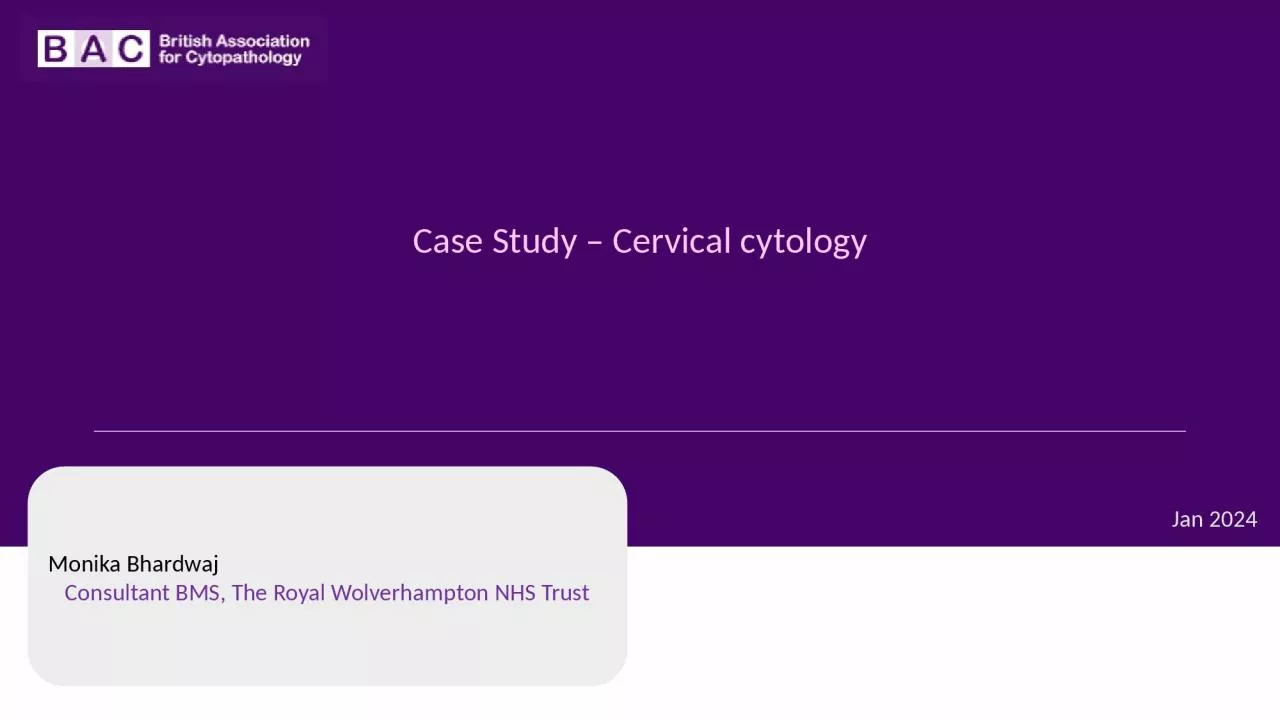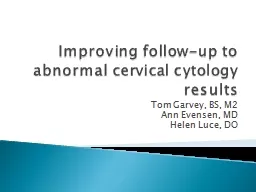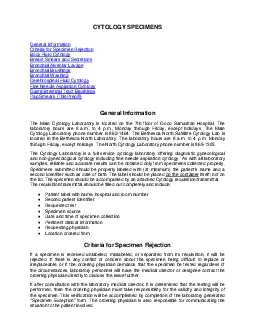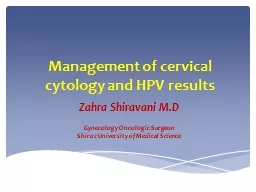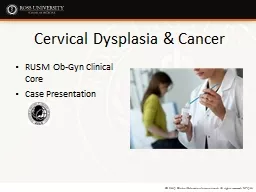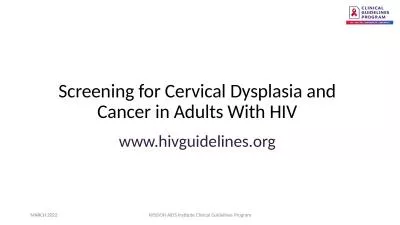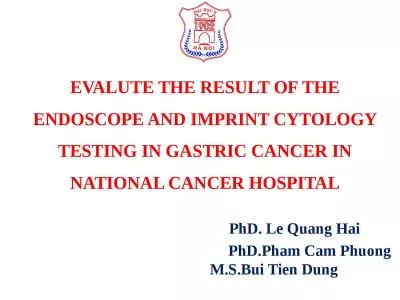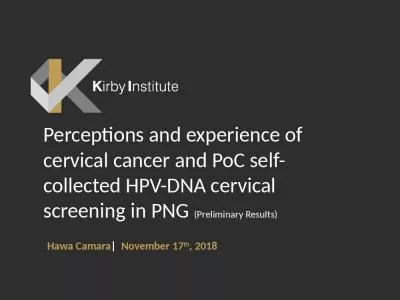PPT-Case Study – Cervical cytology
Author : anya | Published Date : 2024-02-03
Monika Bhardwaj C onsultant BMS The Royal Wolverhampton NHS Trust Jan 2024 42yearold female LMP day 19 Previous cervical screening history 2 moderate dyskaryosis
Presentation Embed Code
Download Presentation
Download Presentation The PPT/PDF document "Case Study – Cervical cytology" is the property of its rightful owner. Permission is granted to download and print the materials on this website for personal, non-commercial use only, and to display it on your personal computer provided you do not modify the materials and that you retain all copyright notices contained in the materials. By downloading content from our website, you accept the terms of this agreement.
Case Study – Cervical cytology: Transcript
Download Rules Of Document
"Case Study – Cervical cytology"The content belongs to its owner. You may download and print it for personal use, without modification, and keep all copyright notices. By downloading, you agree to these terms.
Related Documents

